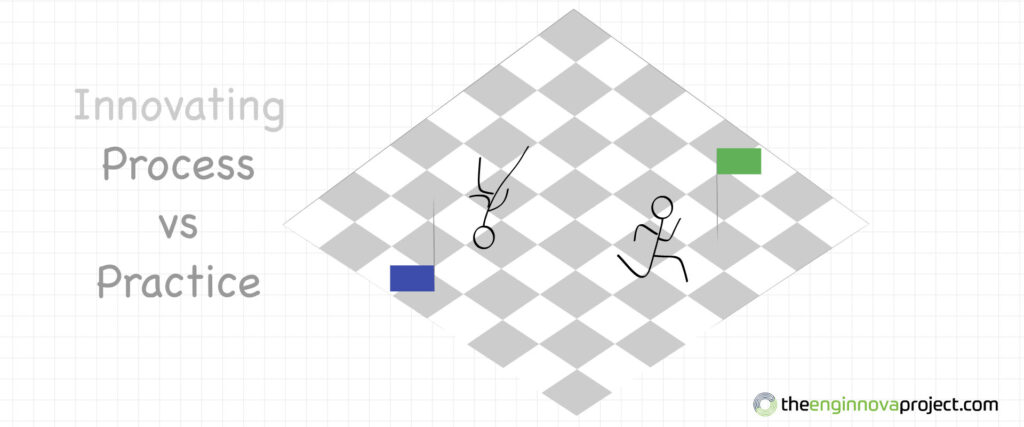
The Boston Consulting Group, in studies conducted from 2005 to 2021, reported that 70% of the companies surveyed identified “Innovation” as a top 3 strategic priority, 90% of executives were dissatisfied with the performance of their Innovation Programs, and that 80% of those companies did not have a systemic innovation practice capable of reliably delivering the desired business impact. BCG dubbed the lack of a systemic practice the “Readiness Gap”.
The implication is that there are a lot of companies who will invest in “more innovation” but will be frustrated by the returns on their innovation investment. The defining issue concerning an incomplete systemic innovation practice is that innovating is non-standard work.
Companies stumble on the difference between a process and a practice.
A process, a series of activities linked in a defined sequence, ensures results from the execution of standard work.
A practice, an expected method of doing something, ensures results from the adaptive nature of non-standard work.
The key difference between a process and a practice is that a process focuses on work tasks, while a practice focuses on work types.
Businesses that consistently deliver innovations tend to manage innovating as a practice.
Businesses that struggle with consistently delivering innovations tend to manage innovating as a process, or a series of processes, without the structure of an overall practice.
Successful innovating businesses utilizing a practice achieve their innovation effectiveness in a similar way.
Businesses that try to force their innovating projects to conform to a standard process, fail to consistently deliver innovations in their own particular way.
